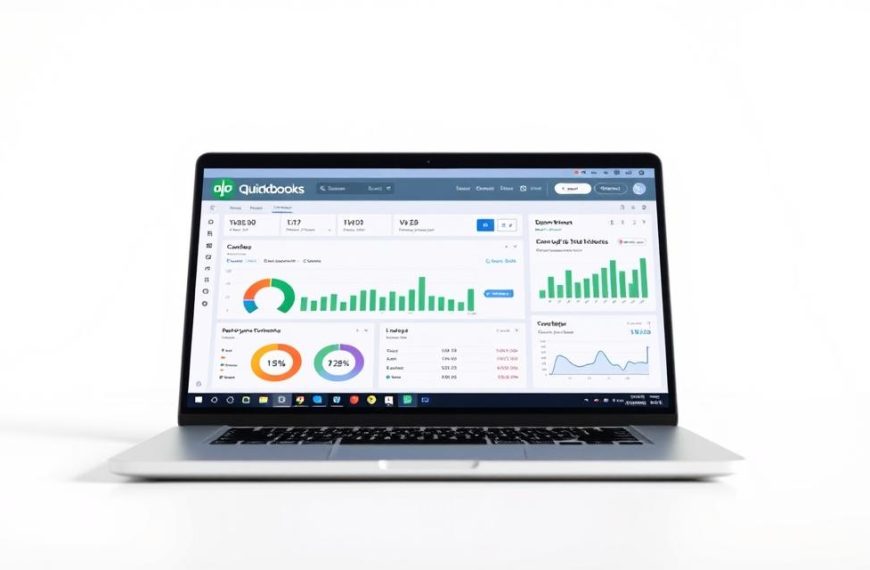A sinking fund is money set aside to cover planned expenses that fall outside of your regular budget. This financial tool helps individuals prepare for large purchases or irregular expenses without disrupting their monthly budget.
By allocating money regularly into a sinking fund, individuals can avoid debt and reduce financial stress. This approach to financial planning is particularly useful for expenses that are not monthly, such as car replacements or holiday expenses.
Understanding how to effectively use a sinking fund can be a valuable addition to one’s financial strategy, enabling individuals to achieve their financial goals more efficiently.
Understanding Sinking Funds in Personal Finance
Understanding sinking funds is essential for effective financial management, as they help in allocating resources for anticipated expenditures. Sinking funds are a strategic approach to managing finances by setting aside money for specific, planned expenses.
Definition and Purpose of Sinking Funds
A sinking fund is a dedicated savings account or allocation within one’s budget designed to accumulate funds for a specific future expense. The purpose of a sinking fund is to ensure that when a planned expense arises, the necessary funds are available, thus avoiding the need for borrowing or dipping into emergency savings. For instance, saving for holiday gifts or home maintenance costs can be managed through a sinking fund.
Why Sinking Funds Are Important for Financial Planning
Sinking funds are crucial for maintaining financial stability by making provisions for irregular but predictable expenses. By allocating a fixed amount regularly into a sinking fund, individuals can avoid going into debt when these expenses arise. For example, setting aside $50 monthly for holiday gifts or $333 monthly for home maintenance on a $400,000 house can significantly reduce financial stress.
| Expense Category | Annual Expense | Monthly Savings |
|---|---|---|
| Holiday Gifts | $600 | $50 |
| Home Maintenance | $4,000 | $333 |
By incorporating sinking funds into their financial planning, individuals can better manage their budget, reduce debt, and enhance their overall financial stability. Sinking funds help in making irregular expenses more manageable through regular, smaller contributions, thereby supporting long-term financial goals.
What Is a Sinking Fund in Personal Finance?

A sinking fund is essentially a separate account for accumulating savings towards a specific future expense or financial goal. This financial tool helps individuals avoid debt by saving in advance for large or irregular expenses.
Origin of the Term “Sinking Fund”
The term “sinking fund” originated in the 18th century, initially used in the context of government finance to describe a fund set aside to pay off national debts. Over time, the concept has been adopted in personal finance to refer to any savings plan dedicated to a specific future expense.
How Sinking Funds Work in Personal Finance
Sinking funds work by systematically setting aside a fixed amount of money at regular intervals, typically monthly, into a dedicated account or subaccount. This approach helps in building a corpus over time, which can then be used to meet a specific financial goal, such as buying a car, financing a holiday, or purchasing an engagement ring.
To effectively utilise a sinking fund, one must first identify the savings goal, determine the required amount, and then calculate the monthly contributions needed to reach the target within the desired timeframe.
Benefits of Using Sinking Funds
Sinking funds serve as a crucial tool in maintaining financial health by reducing the need for credit. By setting aside funds for anticipated expenses, individuals can avoid the pitfalls of debt and associated interest charges. This proactive approach to financial management not only enhances financial stability but also provides peace of mind.
Financial Stability and Peace of Mind
Having a dedicated fund for specific expenses can significantly reduce financial stress. It allows individuals to plan for the future with confidence, knowing they have the necessary funds set aside. This stability is a cornerstone of long-term financial health, enabling individuals to make plans without the burden of potential debt.
Avoiding Debt and Interest Charges
One of the most significant advantages of sinking funds is their ability to help individuals avoid debt. By saving for anticipated expenses, individuals can avoid relying on credit cards or loans, thereby circumventing interest charges. For instance, saving for car repairs or holiday expenses can save a considerable amount in interest that would otherwise be paid on credit card balances. “Sinking funds are a simple yet effective way to maintain financial discipline and avoid the cycle of debt.”

Sinking Funds vs. Emergency Funds: Key Differences
The key to managing unexpected expenses and planned expenditures lies in differentiating between sinking funds and emergency funds. While both are essential components of a robust financial plan, they serve distinct purposes and are used in different circumstances.
Purpose and Planning Horizon
A sinking fund is designated for planned expenses or savings goals, such as annual insurance premiums, holiday gifts, or scheduled home renovations. These funds are typically allocated over a specific period, allowing individuals to save incrementally for anticipated expenditures. In contrast, an emergency fund is reserved for unexpected expenses, like sudden job loss, medical emergencies, or urgent home repairs.
When to Use Each Type of Fund
To determine which fund to use, consider the nature of the expense. For instance, if your car requires repairs that were anticipated, using your sinking fund is appropriate. However, if the repairs are sudden and unforeseen, tapping into your emergency fund might be necessary. Understanding the distinction between planned and unexpected expenses is crucial for effectively utilizing these funds.
| Fund Type | Purpose | Example Expenses |
|---|---|---|
| Sinking Fund | Planned Expenses | Annual insurance premiums, holiday gifts, home renovations |
| Emergency Fund | Unexpected Expenses | Job loss, medical emergencies, urgent home repairs |
Common Types of Expenses for Sinking Funds
Effective financial planning involves identifying expenses that can be managed with a sinking fund. By doing so, individuals can avoid financial shocks caused by irregular but predictable expenditures.

Planned Large Purchases
One common use of a sinking fund is for planned large purchases, such as car maintenance or replacement, home renovations, or buying new electronics. These expenses are typically anticipated but can be costly, making a sinking fund an ideal way to save for them over time.
Irregular but Predictable Expenses
Many expenses, while not monthly, are still predictable and can be planned for using a sinking fund. Examples include annual insurance premiums, property taxes, and seasonal clothing purchases. Historical spending data can be used to estimate these costs, allowing for more accurate planning.
To manage these expenses effectively, it’s essential to adjust sinking fund contributions based on changing circumstances or updated cost estimates. This ensures that all necessary funds are available when needed.
How to Create a Sinking Fund: Step-by-Step Guide
A well-structured sinking fund is built by identifying your savings goals, calculating the required amount, and determining a realistic timeline. This process enables you to prepare for future expenses effectively.
Step 1: Identify Your Savings Goals
The first step in creating a sinking fund is to identify your savings goals. Determine what you are saving for, whether it’s a planned large purchase, an irregular but predictable expense, or any other financial objective. Clearly defining your goal will help you stay focused and motivated throughout the savings process.
Step 2: Calculate How Much to Save
Once you have identified your savings goal, the next step is to calculate how much you need to save. Consider the total amount required for your goal and assess your current financial situation to determine how much you can realistically save each month. This calculation will help you create a feasible savings plan.
Step 3: Determine Your Timeline
Determining your timeline is a critical step in creating a sinking fund. Decide when you need the funds and work backwards to determine how many months you have to save. Establishing a clear timeline will enable you to calculate the monthly contributions required to reach your goal. For instance, if you need to save £1,200 in 12 months, you would need to set aside £100 each month.
To maintain motivation and track progress, consider setting intermediate milestones within your timeline. This approach is particularly useful for longer-term funds, where the savings period spans several years. Additionally, automating your sinking fund contributions can help ensure consistency and reduce the likelihood of missing payments.
- Identify your savings goals clearly.
- Calculate the total amount needed and your monthly contributions.
- Determine a realistic timeline based on your needs.
- Set intermediate milestones to stay motivated.
- Automate your savings to ensure consistency.
Where to Keep Your Sinking Funds

Effective management of sinking funds begins with deciding where to hold them, and there are several options to consider. The ideal account should offer a balance between accessibility and interest earnings.
High-Yield Savings Accounts
High-yield savings accounts are a popular choice for sinking funds due to their liquidity and relatively high interest rates compared to traditional savings accounts. Many online banks offer these accounts with the option to create multiple subaccounts, each with its own nickname based on your specific savings goals.
Money Market Accounts and Other Options
Money market accounts are another viable option, often providing competitive interest rates and limited transaction capabilities. Additionally, you may consider cash management accounts or certificates of deposit for longer-term goals. It’s essential to evaluate the pros and cons of each option, including factors such as interest rates, access, and suitability for your specific sinking fund needs.
Using a budgeting app like You Need a Budget (YNAB) or PocketGuard can help you monitor your sinking funds effectively. Setting up automatic monthly transfers from your main checking account to your sinking funds account can also help you stay on track.
Calculating Your Sinking Fund Contributions
Determining the optimal amount for sinking fund contributions requires careful consideration of several factors, including the total amount needed, the timeline for the expense, and your current financial situation.
Formula for Monthly Contributions
To calculate your monthly sinking fund contributions, you can use a simple formula: Total Amount Needed / Number of Months Until the Expense. For example, if you need to save $1,200 for a car insurance premium due in 12 months, your monthly contribution would be $100.
Adjusting Contributions When Needed
It’s essential to regularly review and adjust your sinking fund contributions to ensure they remain aligned with your financial goals. If you find that your sinking fund is consistently coming up short, you may need to increase your monthly contributions or adjust your budget to accommodate the shortfall. Conversely, if you have excess funds in one sinking fund, you can consider reallocating them to another fund with a shortfall.
| Expense | Total Amount Needed | Number of Months | Monthly Contribution |
|---|---|---|---|
| Car Insurance | $1,200 | 12 | $100 |
| Home Maintenance | $2,000 | 24 | $83.33 |

Popular Sinking Fund Categories
Sinking funds offer a practical solution for saving towards specific financial goals and avoiding debt. By categorising expenses into different sinking funds, individuals can better manage their finances and ensure they are prepared for future expenses.
Home Maintenance and Repairs
One of the most common uses of a sinking fund is for home maintenance and repairs. This includes saving for routine maintenance tasks, such as plumbing and electrical work, as well as larger expenses like roof replacements. By setting aside funds regularly, homeowners can avoid being caught off guard by unexpected repair costs.
Vehicle Expenses
Vehicle expenses, including car maintenance, insurance, and fuel, can be significant. A sinking fund for vehicle expenses helps car owners budget for these costs and avoid financial strain when they arise. Regular contributions to this fund can cover expenses like servicing, tyres, and potential repairs.

Holiday and Gift Funds
Many people use a sinking fund to save for holidays and gifts. By contributing to this fund throughout the year, individuals can enjoy their holidays without accumulating debt. It’s a thoughtful way to save for travel and gifts, ensuring a stress-free festive season.
Travel and Vacation Funds
A sinking fund for travel and vacation can make holidays more enjoyable by eliminating financial stress and potential post-trip debt. To create this fund, estimate travel costs, including transportation, accommodation, food, activities, and souvenirs. Calculate monthly contributions based on your travel timeline and budget, accounting for seasonal price variations. Consider using shared fund options when traveling with family or friends, and maximise your sinking fund through travel rewards and off-season planning.
Incorporating Sinking Funds into Your Budget
To effectively manage your finances, it’s crucial to integrate sinking funds into your budgeting strategy. By doing so, you can ensure that you’re prepared for anticipated expenses and avoid financial strain.
Budgeting Methods That Work Well with Sinking Funds
Several budgeting methods can be effectively used with sinking funds. The 50/30/20 rule, where 50% of your income goes towards necessities, 30% towards discretionary spending, and 20% towards saving and debt repayment, can be particularly effective. You can allocate a portion of that 20% towards your sinking funds. Another approach is to use a budgeting app that allows you to set up separate accounts or categories for different sinking funds.
Automating Your Sinking Fund Contributions
Automating your sinking fund contributions can help you stay on track. You can set up automatic monthly transfers from your main checking account to your sinking funds account. This not only ensures consistency but also reduces the effort required to manage your funds. Consider scheduling these transfers immediately after payday to set aside the money before it can be spent elsewhere. For those with fluctuating incomes, options like percentage-based transfers or adjustable schedules can be beneficial.
Managing Multiple Sinking Funds Effectively
To maintain financial order, it’s essential to manage multiple sinking funds efficiently. This involves tracking your progress and utilizing the right tools to stay on top of your financial goals.
Tracking Your Progress
Regularly monitoring your sinking funds is crucial. You can do this by setting up a spreadsheet or using a budgeting app to keep track of your savings. This helps you stay informed about your progress and make adjustments as needed. Consistency is key to ensuring that you meet your financial objectives.
Using Apps and Tools for Sinking Fund Management
Various apps and tools are available to help manage sinking funds. For instance, apps like You Need a Budget (YNAB) and PocketGuard allow you to monitor your funds and stay on track. HyperJar is another useful tool that enables you to separate your sinking fund money into distinct pots, making it easier to manage your finances. When choosing an app, consider factors such as customization options, visual representations, and integration with your banking systems.

By leveraging these tools and maintaining a disciplined approach, you can effectively manage multiple sinking funds and achieve your financial goals.
Common Challenges and How to Overcome Them
Balancing various financial goals, including sinking funds, requires careful planning and discipline. Managing multiple savings goals can be a challenge, and it’s essential to be mindful of your budget and priorities to avoid spreading yourself too thin.
When Sinking Funds Come Up Short
If your sinking funds come up short, it’s crucial to reassess your budget and adjust your contributions accordingly. You may need to temporarily pause certain sinking funds to address more pressing financial needs.
Balancing Multiple Financial Goals
To balance multiple financial goals, consider implementing a framework for prioritizing various objectives. This may involve rotating focus or allocating resources proportionally based on urgency and importance. By doing so, you can make progress on multiple goals simultaneously, such as debt repayment, retirement savings, and emergency fund building, alongside your sinking funds.
By being flexible and adapting to changing financial circumstances, you can successfully manage multiple sinking funds and achieve your long-term financial objectives.
Conclusion: Making Sinking Funds Work for Your Financial Future
By understanding and utilizing sinking funds, individuals can better prepare for anticipated expenses, thereby enhancing their financial stability and peace of mind. Sinking funds are savings that are meant to be spent on specific goals, such as a vacation or car maintenance, helping to eliminate financial stress when these expenses arise.
To create a sinking fund, one must first identify the savings goals, calculate the required monthly contributions, and determine the appropriate timeline. It’s also crucial to select the right savings account, such as a high-yield savings account, to keep these funds separate from everyday money.
Starting small with one or two sinking funds can still yield significant benefits. As individuals become more comfortable with this financial tool, they can expand their use of sinking funds to cover more expenses. Celebrating milestones and rewarding progress can also help maintain motivation.
In conclusion, incorporating sinking funds into a comprehensive financial plan can lead to long-term financial well-being and support broader financial goals, such as debt freedom and wealth building. By making sinking funds a part of your financial strategy, you can work towards a more secure financial future.










